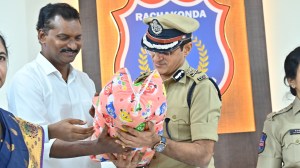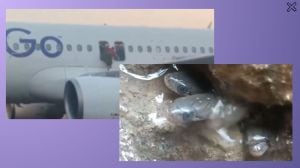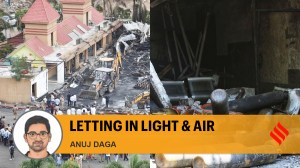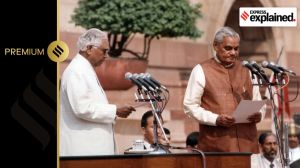- India
- International
A short history of the Indian Mujahideen
Four-and-a-half years after Yasin Bhatkal was picked up, Delhi Police Monday announced the arrest of Touqeer, ‘Phantom’ of the IM. The Indian Express profiles India’s first homegrown terrorist outfit
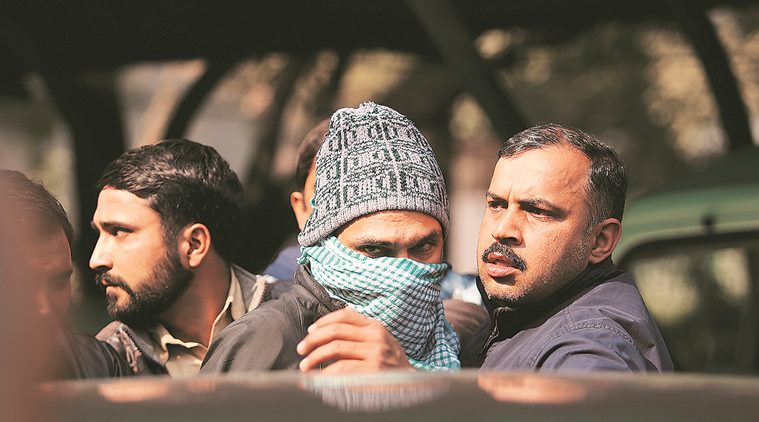 Abdul Subhan Qureshi alias Touqeer in custody on Monday. (Express Photo/Praveen Khanna)
Abdul Subhan Qureshi alias Touqeer in custody on Monday. (Express Photo/Praveen Khanna)
Abdul Subhan Qureshi alias Touqeer, whose arrest police announced Monday, figured in every major blast starting 2007. Touqeer was for a time suspected to be the author of the signature email claims that the Indian Mujahideen (IM) made. He was subsequently found to be more identifiable with the Students’ Islamic Movement of India (SIMI) than with the IM, but the lines between the organisations were always blurred. IM was alleged to be recruiting from SIMI — Haider Ali, named in the 2013 Patna and Bodh Gaya terror attacks was one such recruit — and several bomb blasts have been attributed to the “IM/SIMI”.
The Beginnings
When it was born in Karnataka’s Bhatkal in 2000, the IM was Usaba — Arabic for congregation. Its members came from Karnataka, Maharashtra, Andhra; its main objective was allegedly to bring together people who were committed to waging holy war against non-Muslims and the Indian state.
As Usaba was growing in South India, a programme engineer from Azamgarh called Mohammed Sadiq Sheikh recruited Arif Badaruddin Sheikh and Dr Shahnawaz, and sent them to Pakistan via Dubai for terror training. Sadiq was arrested by Mumbai Police in 2008. The two groups were joined by Riyaz Bhatkal and his brother Iqbal.
The IM’s first strike was against the American Center in Kolkata in 2002, even though it was not yet known by that name. The attack was allegedly masterminded by Amir Reza Khan and Aftab Ansari to avenge Amir’s brother Asif Reza Khan, who had been killed by police in Gujarat the previous year. Also in 2002, Amir Reza and Riyaz recruited Sadiq Sheikh and sent him for training to Pakistan.
Investigators say the IM grew out of the Asif Reza Commando Force (ARCF), a shadowy offshoot of the Harkatul Jihad-e-Islami (HuJI) of Bangladesh. Amir Reza Khan, Iqbal Bhatkal and Riyaz Bhatkal are said to be the founder members of the IM. Indian intelligence agencies believe they were backed and guided by the HuJI-B and Lashkar-e-Taiba, who helped them build a small but highly effective cadre of home grown jihadists. The IM’s initial recruits were prosperous but socially conservative, urban middle-class Muslims from Bhatkal and Azamgarh.
Between 2003 and 2005, IM operatives used milks cans as IEDs. These bombs were first planted at Varanasi’s Dashashwamedh Ghat on February 23, 2005, allegedly by Dr Shahnawaz and Arif. Only one of the two bombs exploded. Subsequently, Atif Ameen, who was to be killed in the 2008 Batla House encounter, allegedly planted a suitcase bomb on the Shramjeevi Express in July 2005. The blast at Jaunpur killed 13 and injured 50.

Read | Abdul Subhan Qureshi: Techie to terror and blasts suspect
The IM’s Emails
The IM announced itself through an email to the media, sent immediately after the November 2007 blasts in courts at Lucknow, Faizabad and Varanasi. “A suitable name had still not been fully decided for the outfit. When the email was sent claiming the Uttar Pradesh court blasts, the term Indian Mujahideen mentioned in the email… was picked up instantly by the media. The new nomenclature of IM was liked by the operatives and thus used in the subsequent emails along with a designed logo,” the National Investigation Agency (NIA) said in a supplementary chargesheet filed in February 2014.
In subsequent emails, the IM claimed responsibility for the 2005 Diwali blasts in Delhi, the 2006 Mumbai train blasts, and the 2007 Varanasi and Hyderabad blasts. Until then, investigators had said these blasts had been carried out by Pakistan-based terror groups.
The emails cited the Babri demolition of 1992, the Gujarat riots of 2002, and the “perceived injustice” to Muslims at large as the reason for their action. Investigators were initially dismissive — but gave credence to an email that came on May 13, 2008, owning responsibility for the Jaipur blasts. This email, too, referred to Babri and Gujarat, but it was better drafted, described the IM as an organisation with three wings, and contained pictures showing the number of the bicycle on which one of the IEDs had been planted.
An email came just before the Ahmedabad blasts of July 26, 2008. It was well drafted, had a logo attached, and was captioned “THE RISE OF JIHAD, REVENGE OF GUJARAT”.
Read | Abdul Subhan Qureshi arrested: 14 rounds exchanged in encounter, say police
The IED Signatures
The IM’s improvised explosive devices (IEDs) used ammonium nitrate and “SAMAY/LOTUS” branded clocks as timers. The gelatin rods used in Patna and Ranchi were of “Rajpower 90”. The detonators came from Andhra Pradesh Explosives Ltd and Rajasthan Explosives and Chemicals Ltd. From milk cans, the group began to pack explosives in suitcases, tiffin boxes and pressure cookers. From “boat-shaped” to “elbow pipe”, the bombs became more sophisticated, and contained more ammunition. In Patna and Ranchi, not much damage was caused, but the IEDs demonstrated the ability to carry out multiple strikes with relative ease. In the 2012 Pune blasts, the bombs were equipped with three detonators instead of the standard two — an indication, investigators say, that they were built by newer bombmakers.
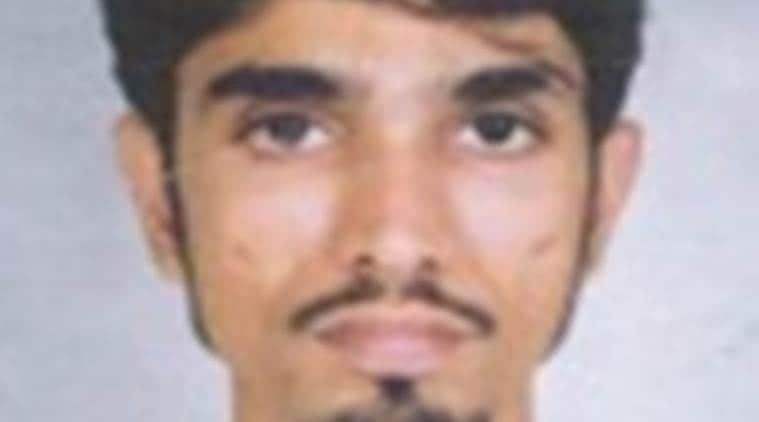 Abdul Subhan Qureshi was an alleged mastermind in the 2008 serial blasts in Gujarat.
Abdul Subhan Qureshi was an alleged mastermind in the 2008 serial blasts in Gujarat.
Faces Revealed
The identities of IM operatives were unknown until September 19, 2008, when the Batla House encounter took place. Atif Ameen and Mohammed (Chhota) Sajid were killed. The breakthrough led to a large number of arrests in Delhi, Mumbai and elsewhere, and the involvement of the IM was revealed in blasts going back to February 2005. The Batla House encounter is thought to have broken the back of IM operations in India, sending most of its top leadership, including Riyaz and Iqbal, underground.
A year after the arrests, Mohammed Ahmed Siddibapa alias Yasin Bhatkal was put in charge of the IM by Riyaz. Yasin allegedly established the IM’s so-called Darbhanga, Delhi and Ranchi modules, and was responsible for a series of attacks, including the German Bakery blast, the Delhi Jama Masjid shooting, and the Varanasi blast (all in 2010), the 2011 Mumbai bombings, and the 2013 Hyderabad blasts. Yasin was arrested from Nepal in 2013 along with another IM operative Asadulla Akhtar. His interrogation led to the identification of several top IM operatives.
Al-Qaeda, Taliban, ISIS
According to the NIA, after leaving India, Riyaz made efforts to collaborate with al-Qaeda and the Taliban. “Al-Qaida tasked Riyaz to work towards the given tasks of kidnapping of Jews and for making network in Burma for commission of terrorist activities there… During his stay at Pakistan, the accused also formed association with a group of Rohingya Muslims engaged in terrorist activities,” the chargesheet states.
Also, the NIA said, “The ISI wants to fully control the activities of the IM operatives, and wants to ensure that their work is totally on its directions…”
An IM group headed by Maulana Abdul Khalid Sultan Armar and his younger brother Shafi Armar launched the Ansar-ul-Tawhid (AuT) in Afghanistan, which owed allegiance to the Islamic State. AuT propaganda videos “Lions of the Hind” and “Kandahar se Dilli ki taraf” were posted on YouTube in 2013. While Sultan Armar is believed to have been killed in a drone attack, Shafi Armar migrated to Syria as an ISIS recruiter, and has been listed as a globally designated terrorist by the United States. Shafi Armar is the main suspect in the 2014 Church Street blast in Bengaluru, for which a former SIMI ideologue Alamjeb Afridi was arrested in 2016.
Alleged Operatives
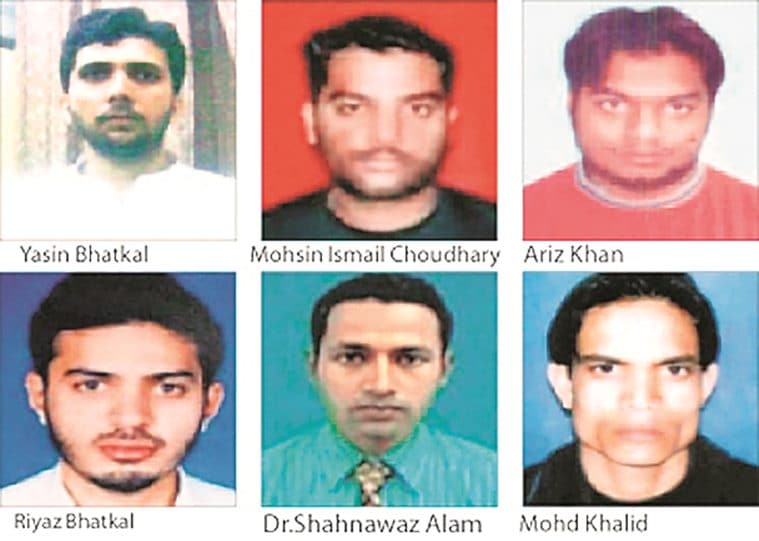
Riyaz Bhatkal
Co-founder of the Indian Mujahideen (IM) and currently the leader of the group; Riyaz Ahmad Shahbandri alias Riyaz Bhatkal is said to be dividing his time between Pakistan and Saudi Arabia. An Interpol Red Corner Notice has been issued against him. NIA has announced a reward of Rs 10 lakh for him.
Status: Absconding
Amir Reza Khan
On the run for more than a decade, Amir Reza Khan is described as a key founder of the IM. He is the younger brother of Asif Reza Khan, the man after whom the Asif Reza Commando Force, a shadowy collaboration between terrorism and organised crime, was named. The ARCF was behind the 2002 American Center attack in Kolkata. Amir Reza Khan is believed to be living in Pakistan under the ISI’s protection.
Status: Absconding
Iqbal Bhatkal
The brother of Riyaz, Iqbal, too is believed to be in Pakistan. He has reportedly married a Pakistani woman, and has now largely distanced himself from the IM’s activities.
Status: Absconding
Mohsin Ismail Chaudhary
Chaudhary is now considered to be the key operative of the IM after Riyaz. He is reported to be in Pakistan; his family lives in Pune.
Status: Absconding
Dr Shahnawaz
Shahnawaz, a unani doctor, belongs to Azamgarh in UP. His younger brother Saif was arrested during the 2008 Batla House encounter. Dr Shahnawaz is believed to be in Afghanistan now.
Status: Absconding
Yasin Bhatkal
One of the top commanders of the IM, Yasin is thought to have been radicalised around the time he was 17. He was arrested by security agencies from Nepal in 2013.
Status: In judicial custody
Abdul Subhan Qureshi
Touqeer is described as a hardcore SIMI ideologue. He had escaped to Nepal, and was said to have travelled to Saudi Arabia to meet Riyaz Bhatkal, who alleged motivated him to revive the Indian Mujahideen.
Status: Arrested
Alleged attacks
Sankat Mochan Temple, Varanasi
March 7, 2006
ACCUSED: HuJI-B*
CASE STATUS: Trial ongoing
Serial train blasts, Mumbai
July 11, 2006
ACCUSED: LeT/SIMI*
CASE STATUS: 12 convicted
Gokul Chat and Lumbini Park blasts, Hyderabad
August 25, 2007
ACCUSED: IM/SIMI
CASE STATUS: Trial ongoing
Serial blasts, 10 places in Jaipur
May 13, 2008
ACCUSED: IM/SIMI
CASE STATUS: Trial ongoing
Serial blasts, 23 places in Ahmedabad
July 26, 2008
ACCUSED: IM/SIMI
CASE STATUS: Trial ongoing
Bombs found, 27 places in Surat
July 28-29, 2008
ACCUSED: IM/SIMI
CASE STATUS: Trial ongoing
Serial blasts, 5 places in Delhi
September 13, 2008
ACCUSED: IM/SIMI
CASE STATUS: Trial ongoing
German Bakery attack, Pune
February 13, 2010
ACCUSED: IM
CASE STATUS: 1 convicted
Serial blasts, Bodh Gaya
July 7, 2013
ACCUSED: IM/SIMI
CASE STATUS: 1 convicted
Serial blasts, Patna
October 27, 2013
ACCUSED: IM/SIMI
CASE STATUS: 1 convicted
*Initial investigations concluded these groups were responsible, but arrests in subsequent years appeared to suggest the hand of the Indian Mujahideen
More Explained
EXPRESS OPINION
May 28: Latest News
- 01
- 02
- 03
- 04
- 05





















